High Rise Habicht. The Goshawks Of Berlin Part II - March 2024
2024 marks the fifth year I have been running Goshawk Birding Safaris in North Yorkshire with my excellent guides Jono Leadley and Johnny Mac. During this time, I have also been popping across to Berlin to watch Goshawks. North Yorkshire and Berlin are the two best places in Europe to experience these amazing birds, but of course I am little biased being born in North Yorkshire.
The North York Moors National Park have large scale (from and UK perspective) mixed forests which are perfect for Goshawks. Over the glacial valleys and escarpments, we can watch these magnificent birds displaying and interacting all on our home turf. Our YCN Safaris also donate £750 each year to the RSPB Species Investigation Unit so everyone attending our special days can be sure they are helping Goshawks and many other birds faced with persecution. Read more HERE.
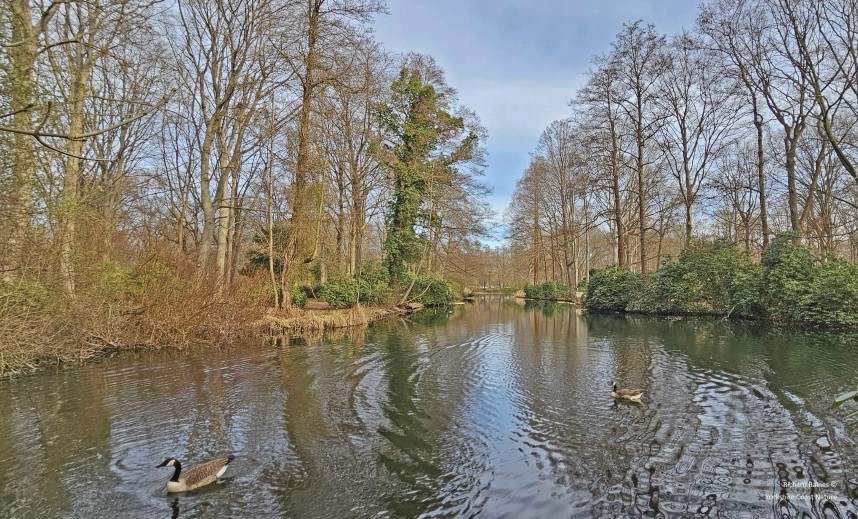
Tiergarten - Berlin March 2024 © Richard Baines
In contrast to North Yorkshire, the city parks in Berlin offer the opportunity to watch Goshawks and other great birds within a surprising environment. I would never have thought Goshawks could thrive in the middle of a modern city. With far less historical persecution, these birds have adapted to become an integral part of the natural culture in Berlin.
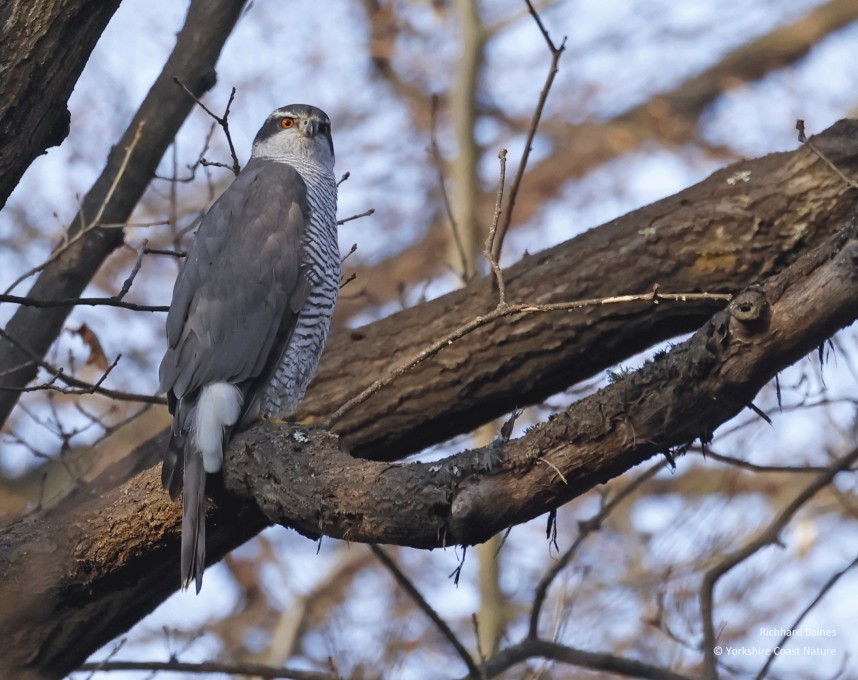
Northern Goshawk (male) - Berlin March 2024 © Richard Baines
My recent visit to Berlin was short but I managed to spend some quality time watching a nesting pair of Goshawks and learn about their behaviour. I was also able to contrast their behaviour with my first visit, four weeks earlier in 2018 (see part I of my Berlin story CLICK HERE).
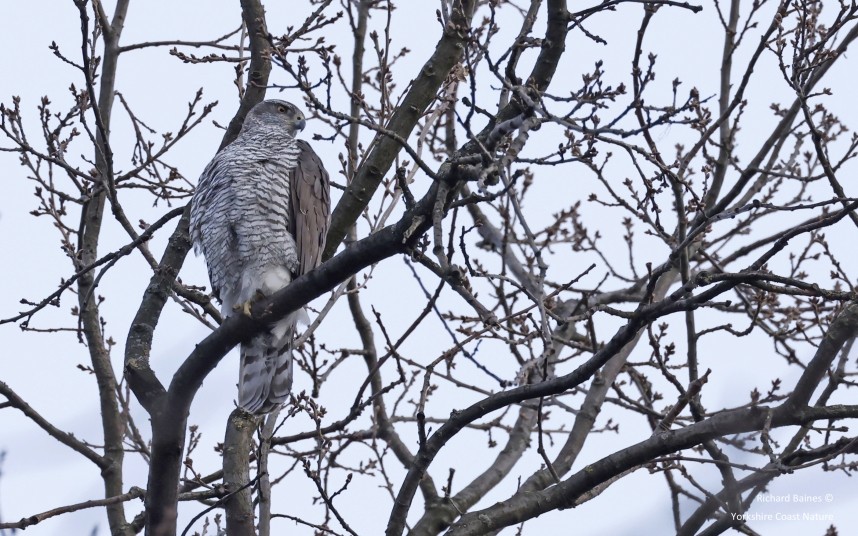
Northern Goshawk (female) - Berlin March 2024 © Richard Baines
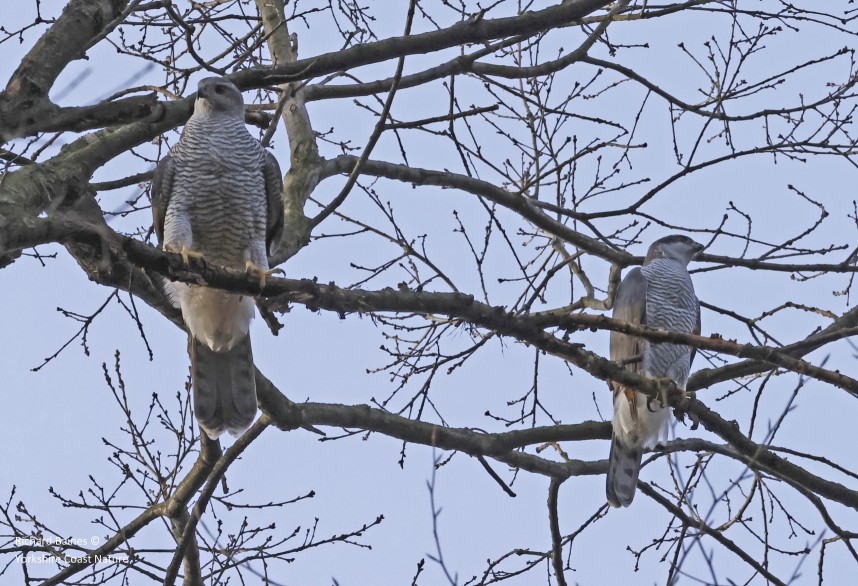
Northern Goshawk (female and male) - Berlin March 2024 © Richard Baines
On my first visit the female was moving around her nesting territory a great deal. All powerful, sporting her flashing white undertail and her muscular body, she was quite a sight. The male only put in brief appearances to bring food offerings to the nest which was still being built. With such an impressive female nearby, his elusive behaviour was not at all surprising.
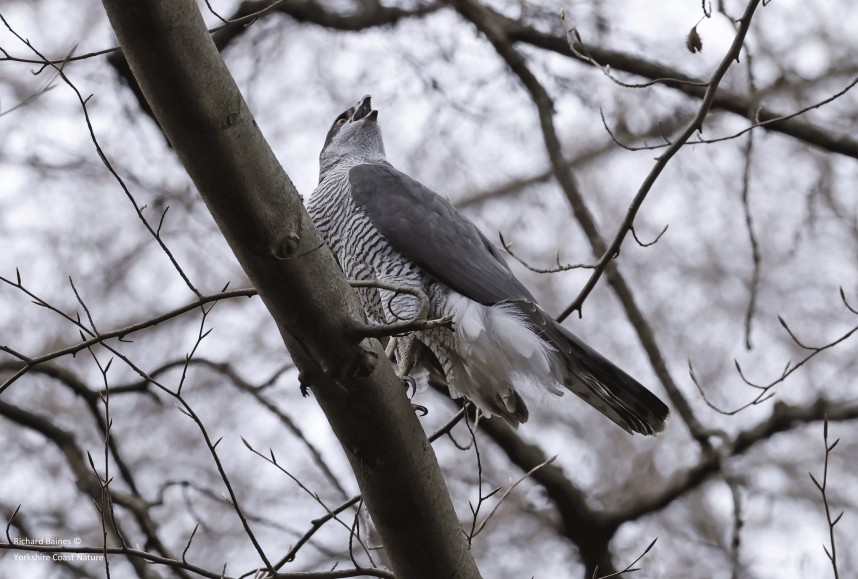
Northern Goshawk (male) - Berlin March 2024 © Richard Baines
Fast forward to March 2024 and it was all change. Four weeks made a significant difference in breeding behaviour. This time the nest I was watching was completed and the female spent many hours sat on or very close to the nest. She made local journeys to nearby trees where she perched silently, only calling occasionally. Meanwhile the male of the pair was happy to rest nearby and would call more than the female.
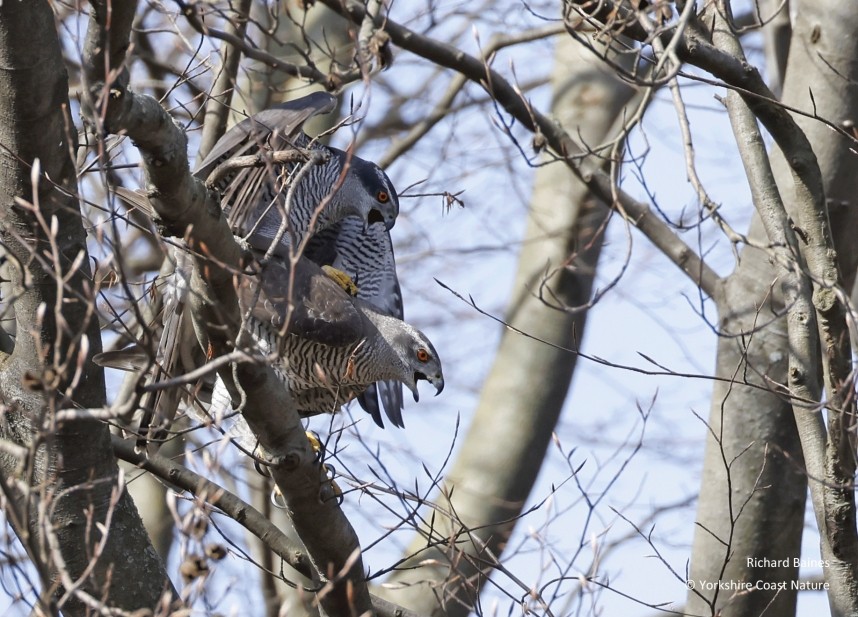
Northern Goshawks mating - Berlin March 2024 © Richard Baines
But they were both still very sexually active. Goshawks have been found to copulate over 500 times in a season (Kenward et al., The Goshawk 1970). On my visits I saw mating twice, the first time the female flew to a perch and the male joined her but I only saw it briefly. The second time, a day later I was in a better place for a quick photo but still distant enough not to cause disturbance. I wouldn’t have wanted to upset this process!
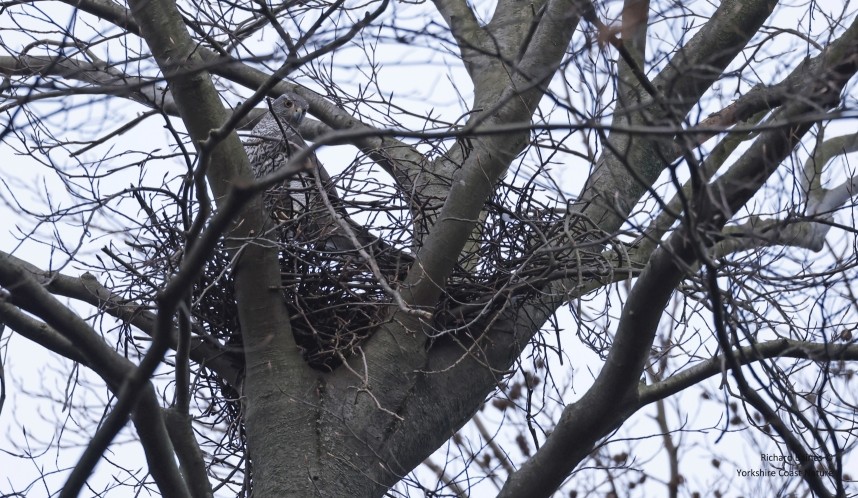
Northern Goshawk female nest building - Berlin March 2024 © Richard Baines
Nearby a second female was busy building a new nest. On one occasion the second female flew around the established pair causing havoc. She was eventually chased off by the dominant female.
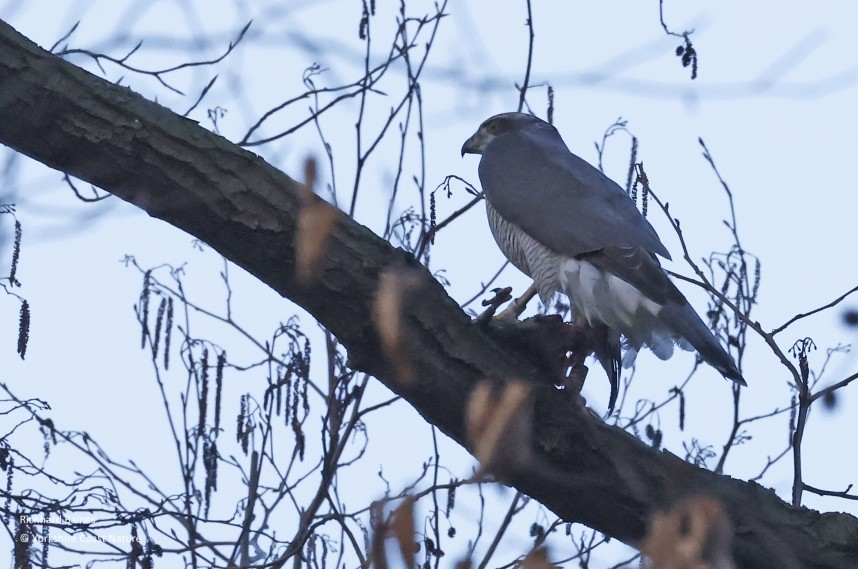
Northern Goshawk (male) with prey - Berlin March 2024 © Richard Baines
On two occasions I watched the male fly in carrying prey and perch away from the nest. On the second occasion I managed a photo. Through my binoculars I could see he was carrying a medium sized catch. I imagined this to be a pigeon or a squirrel, however on closer inspection of the photo there are significant talons visible. It looks like another raptor, maybe even a Goshawk.
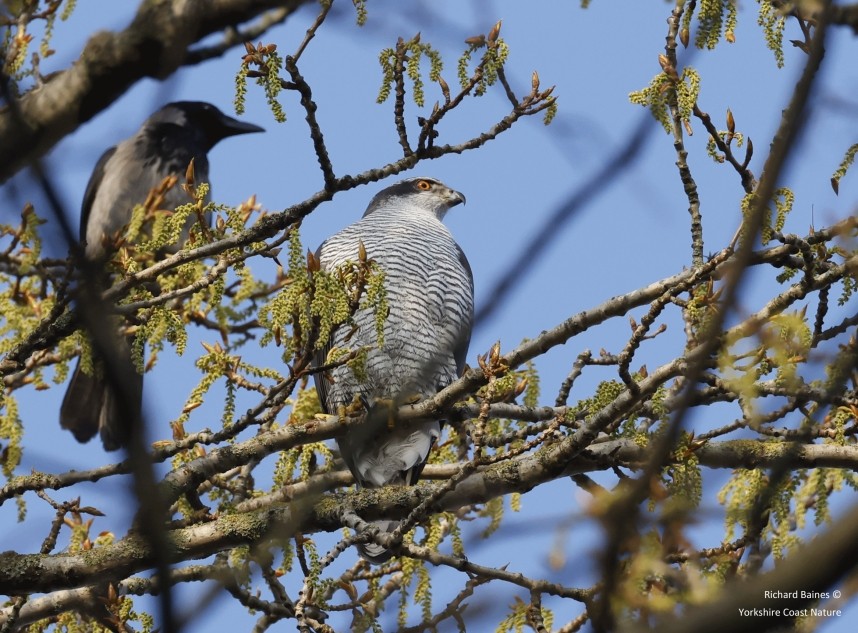
Northern Goshawk female nest building - Berlin March 2024 © Richard Baines
It was amazing to see the dominance of these Goshawks over all other birds at close quarters. Only once did they get hassled by the local Hooded Crows. After a brief squabble with four crows the male flew to the top of a tree further away from the nest and watched over his territory whilst a Hooded Crow inspected him, even daring to poke his bill at his chest. The Goshawk just sat there without being bothered, probably more interested in watching over the nest or where his powerful female was.
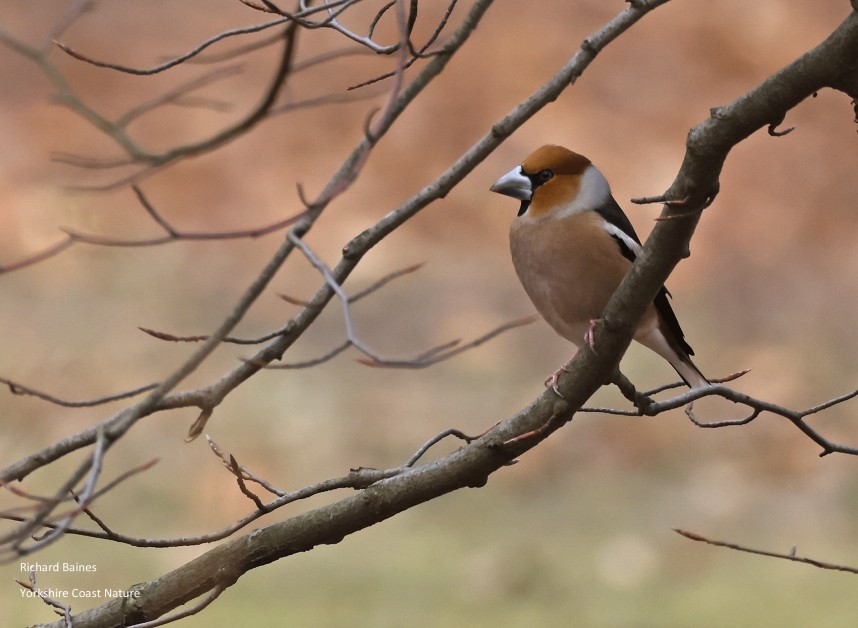
Hawfinch (male) - Berlin March 2024 © Richard Baines
In the parks and woodlands of Berlin many other great birds and mammals can be seen. On my visit I was really pleased to hear singing Hawfinches. They were tricky to get close to, their behaviour was very similar in this respect to the UK despite being closer to humans in the city parks. The small flock I photographed were feeding on Beech seeds below the trees.
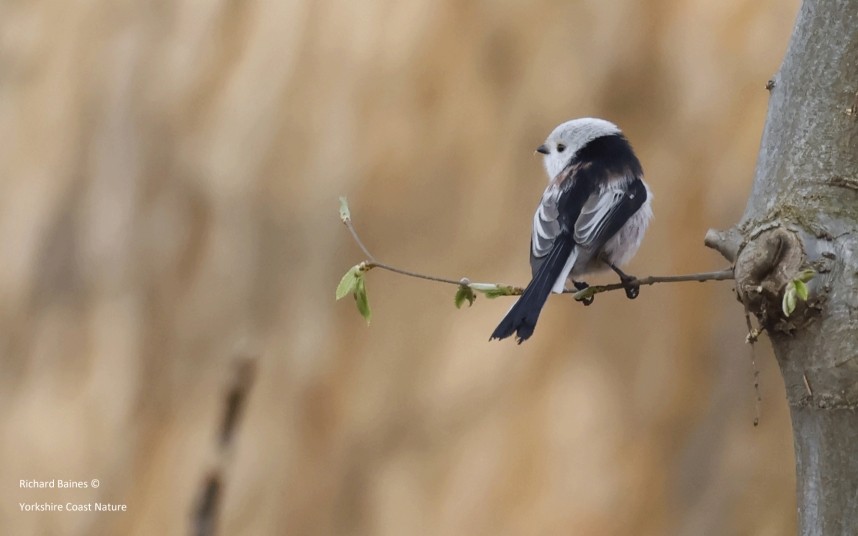
Northern Long-tailed Tit - Berlin March 2024 © Richard Baines
Nearby a pair of Long-tailed Tits of the white-headed subspecies group referred to as ‘Northern’ Long-tailed Tit Aegithalos caudatus caudatus were collecting nesting material.
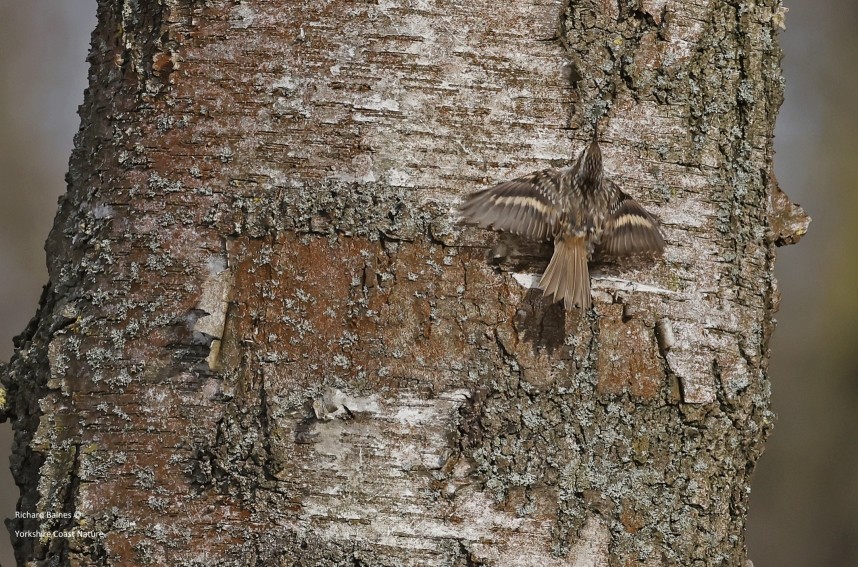
Short-toed Treecreeper - Berlin March 2024 © Richard Baines
Great-spotted Woodpeckers were very common chasing each other through the trees and Short-toed Treecreepers were singing in almost every part of the park.
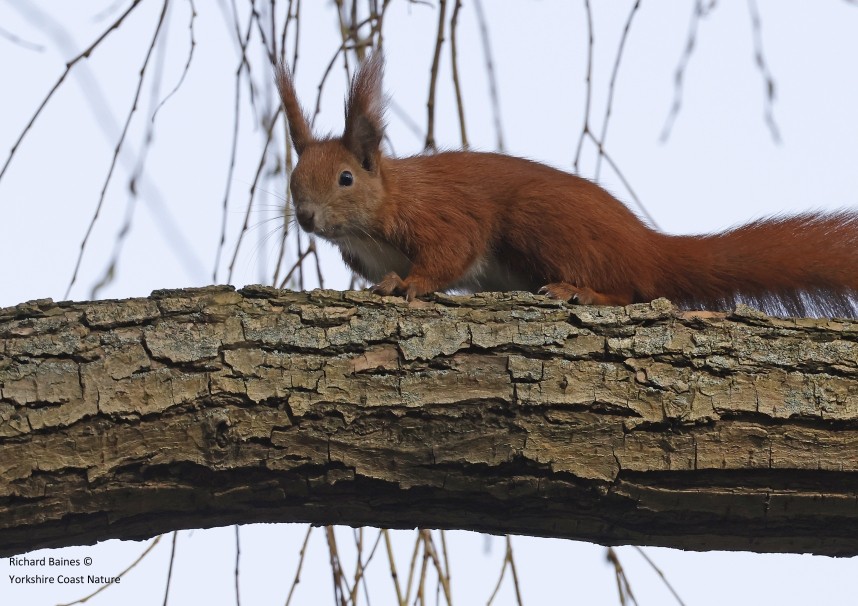
Red Squirrel - Berlin March 2024 © Richard Baines
Despite the Goshawks, Red Squirrels are also very common here. It was great to watch their acrobatics as they chased each other through the tree tops.
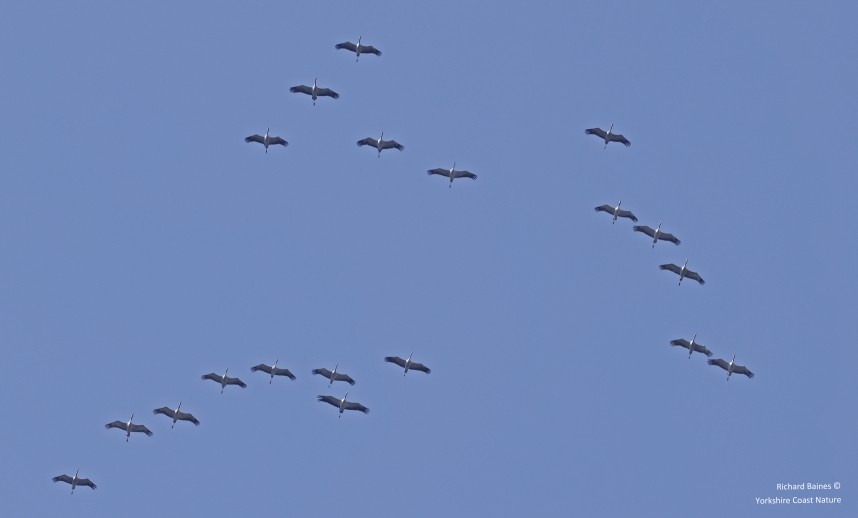
On my second day I heard the sound of Common Cranes calling. This was a ‘wow’ moment as a flock of 36 migrated over the park and city. Equally enthralling was seeing two flocks totalling several hundred White-fronted Geese flying over.
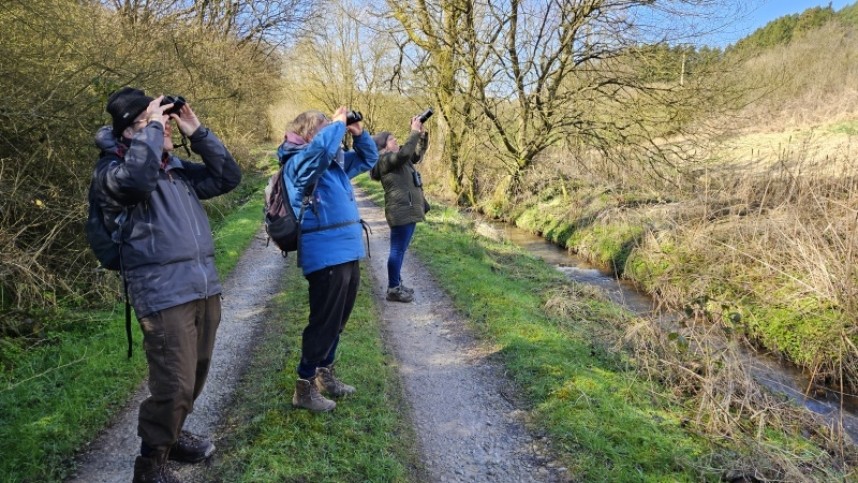
Watching Goshawks on a Yorkshire Coast Nature Goshawk Safari March 2024 © Richard Baines
Two days after I returned to North Yorkshire, I was back leading a Goshawk Safari close to home. It was a very successful day with 15 Goshawks seen by our two groups alongside many Common Buzzards, Peregrine Falcon, a fantastic flock of 300 Bramblings and great views of Common Crossbills.
A week of studying the behaviour of Habicht in Berlin and our Hawks in North Yorkshire, and being able to share our passion for these birds with our guests is always a real thrill.
Richard Baines
Director Yorkshire Coast Nature



 Back to Blog
Back to Blog
